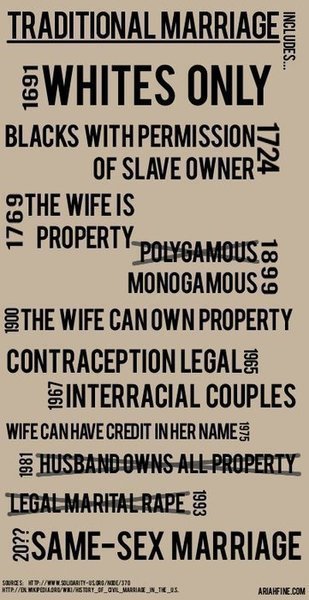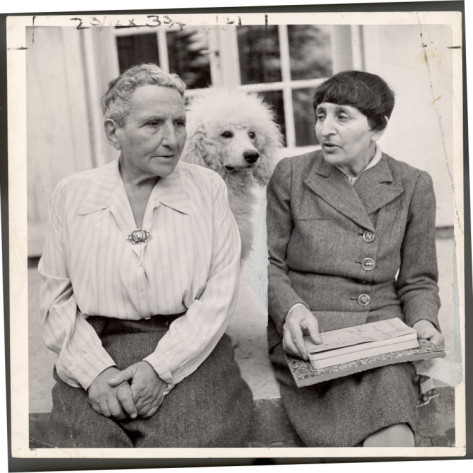This was a big year for the gays and same sex marriage. In New York, we came, we fought, we conquered, we made out. Well, high five your gay best friend because Salon tells us that this year we reached another landmark. Back in May, a Gallup poll revealed that for the first time, more than 50% of Americans support our right to marry; Salon’s Linda Hirshman claims that this means we’ve finally succeeded in making marriage equality a moral issue in America, and that this could make all the difference. She writes that concepts of “fairness” or “tolerance” aren’t what change hearts and minds; the change in American opinion on marriage equality is because we’ve finally managed to convince people that it’s the right thing to do.
While Linda Hirshman at Salon writes of our success in winning over the majority with our moral claims to the social institution of marriage, a recent essay from Lapham’s Quarterly laments the same. In his essay Working Arrangement, Justen E. Smith reminds readers that the nuclear family is a recent social invention directly tied with the rise of industrialization and consumer culture. Smith reduces the modern image of the loving American couple to essentially an extension of traditional exchanges of the means of production from one family to the next. Read: the history of marriage shows it to be not so much about love and passion, more so about money and, as of late, work. (And apparently there are no straight men for the ladies to marry to increase their market-value anyway, as Kate Bolick explains in her essay in The Atlantic, “All the Single Ladies”. Bummer.)
Smith’s essay reminds readers of the origins of so-called “traditional” marriage. Right-wing arguments to protect the sanctity of marriage and promotion of salvaging what is a “natural” family are a real hoot when you actually consider facts and history. Let’s take a brief stroll down memory lane and revisit oppressions past. Ariah Fine offers this infographic:

So in summation: the problems with “traditional marriage,” they are many. Until recently, Smith notes, “gay love has always stood on the margins of the economic contract that is heterosexual marriage.” And for Smith the reasons homosexuals are now being welcomed into the marriage contract are much more economic than romantic. Furthermore, in his opinion there is a tragedy in the likely loss of a radical, creative marginalized society as queers are brought into the mainstream fold. Same-sex couples as work-love units are not sexy.
For Smith, the “imperialist” institution of marriage closing in on the counter-culture of same-sex desire risking utter “domestication” of the gay. He writes, “we are not supposed to speak anymore of the connection between same-sex desire and creativity.” Basically, as I understand the essay, Smith believes in the “gay gene” and thinks we are ruining it with the boring institution of mainstream marriage. He seems particularly troubled by all of the creativity we are ruining in gay men, but maybe he also recognizes it in lesbians? Unclear.

Should we be concerned that this so called domestication (note: using that word definitely makes me feel icky) of the LGBTQ community through mainstream marriage norms will tame us? I find the idea of romanticizing marginalization of a community highly problematic, and it fails to really address all the ways in which queer families experience real economic marginalization under the current system. Nevertheless the question of winning people over to our side through the “morality of the mainstream” does raise some interesting questions. What would Gertrude and Alice think?
The fact that 2011 was a landmark year for the progress of marriage equality seems inarguable. How our community feels about that, and what place we want marriage equality to take in our continued struggle for equal rights, seems like it’s still up for plenty of debate. Maybe 2012 will be the year that we’re finally in a position to experience what equality feels like, and decide what we think about being “mainstream.”







